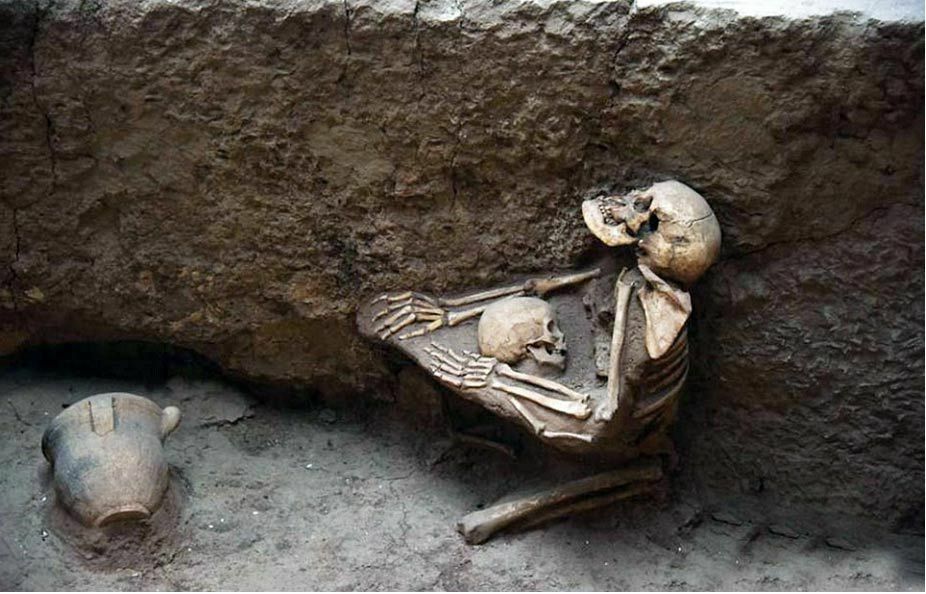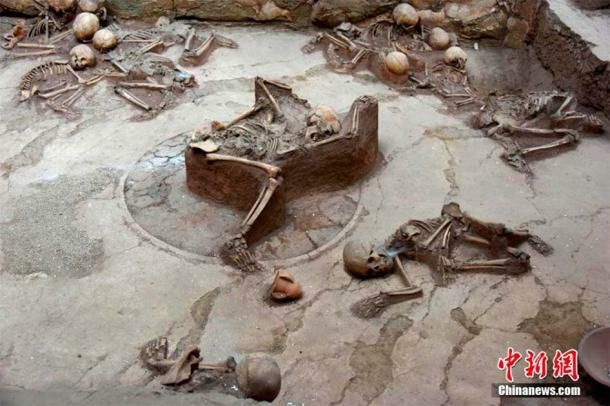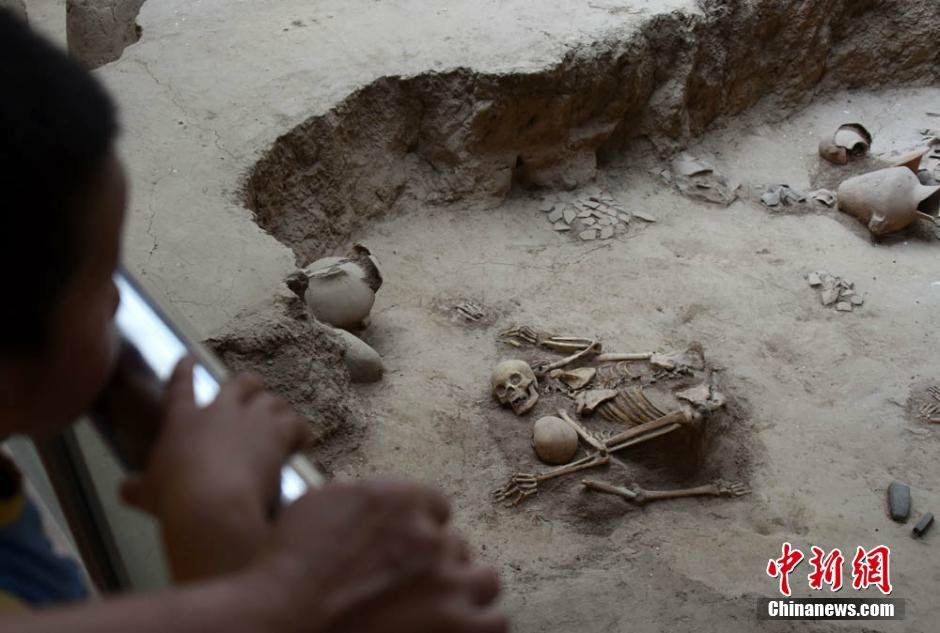4,000-Year-Old Chinese Earthquake Victims Captured in Their Final Moments
The victims of an earthquake that struck the Chinese community of LaJia in Qinghai Province on the Upper Yellow River were put on display on this day by the LaJia Ruins Museum in 2015. It’s a scene that the China People’s Daily describes as bringing tears to the eyes of visitors as victims are seen huddled together in terror, while women are embracing young children in an attempt to protect them.
Like the victims of Pompeii, the Roman city overtaken by the eruption of Vesuvius in 79 AD, the remains of the people in LaJia are preserved in sudden brutal death. While the humanity of the Pompeiians is preserved by the casing of volcanic ash and mud, in LaJia, the full horror is brutally apparent in their skeletal remains.
The disaster was caused by a mudslide triggered by an earthquake which crushed a Bronze Age building including all those inside. It was a family home within which the occupants sought refuge in the hope of survival. The remains of a woman and child, probably a boy, are preserved against one of the walls. Another woman and child can be seen upturned in a similar posture while the skeletons of two children cling to an adult-like figure against another wall. The people here belong to China’s Bronze Age Qijia culture, which means their remains are 4,000 years old, the earthquake hitting the area around 2,000 BC.
The victims’ skeletons are scattered throughout the room. Although their lives ended tragically, their preservation provides valuable insights into the ancient civilization that once thrived in the region. The LaJia Ruins Museum serves as a poignant reminder of the destructive power of natural disasters and the human lives they affect. It stands as a tribute to those who perished and a testament to the resilience of the human spirit.
Hits: 1





